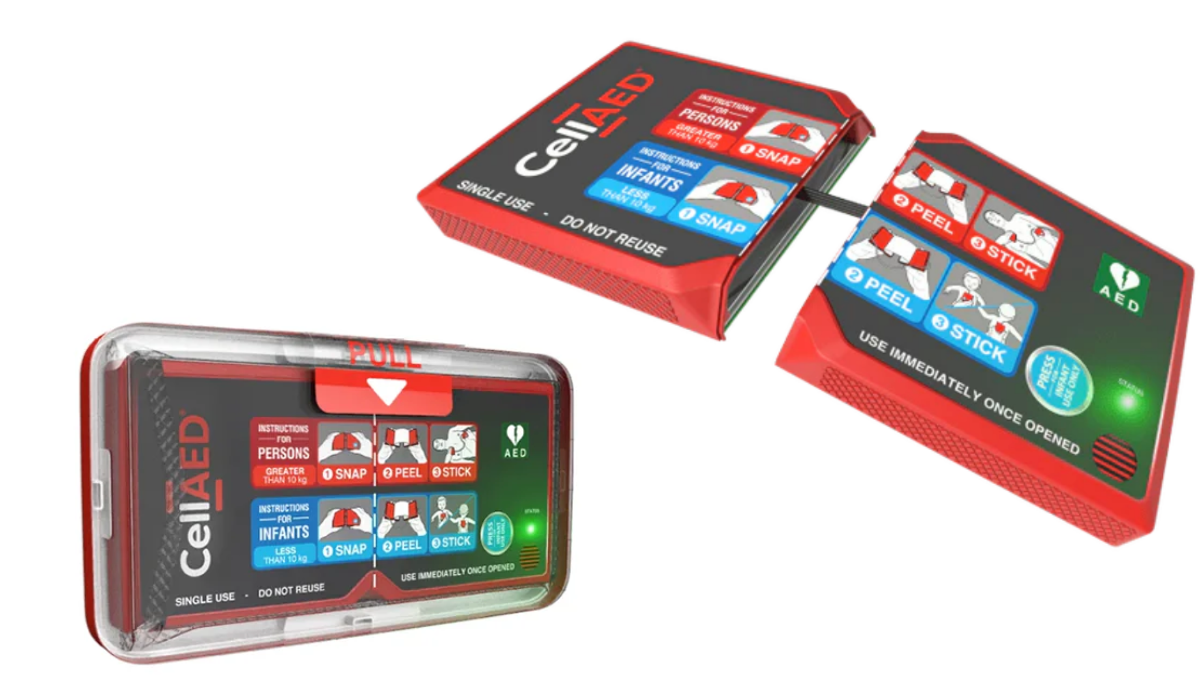
We’ve all seen them in gyms, grocery stores, and doctor’s offices: boxes with a lightning bolt and a heart on them. These boxes contain AEDs or automated external defibrillators, which are life-saving devices.
Cardiac arrest has a survival rate of approximately 10 percent, but the odds increase when AEDs are used properly. We’ll explore the many benefits of handheld personal defibrillator ownership in the sections below.
Table of Contents
Help During At-Home Cardiac Events
The American Heart Association and the CDC report that more than 350,000 cardiac arrests occur each year, with nearly 70% happening at home. Almost half of patients don’t get the assistance they need—CPR and defibrillation—before EMTs arrive. However, if life-saving measures are started within minutes of a cardiac event, the chances of survival are tripled.
Easy Use With Training
In the event of a sudden cardiac emergency, anyone with the proper training can use a handheld defibrillator to save someone’s life. Whether you’re a receptionist, a warehouse worker, or a stay-at-home parent, having an AED nearby ensures your safety and that of the people around you.
Reassurance for Those at Greater Risk of Cardiac Arrest
The Mayo Clinic’s medical experts believe it’s important for seniors and people with a family history of heart disease to have access to AEDs at home. Heart attack risk factors include:
- High blood pressure
- Smoking
- Obesity
- High cholesterol
- Diabetes
- Inactivity
While the best results come from the management of these lifestyle factors and health conditions, home AEDs provide additional reassurance to those suffering from cardiac conditions.
Help for Second Timers
Despite the old saying, lightning can and will strike twice. If you’ve survived a cardiac event, you’re at a much higher risk of another. Take charge of your health and future by investing in a handheld AED—and making sure your neighbors, friends, and family know how to use it.
Fighting Pandemic-Related Cardiac Risks
Studies by Italian doctors found that, between the end of February and the end of March 2020, there was nearly a 60% increase in sudden cardiac arrests compared to the same period in 2019. The additional stresses of COVID-19, a fear of going to the hospital during the pandemic, and bystanders’ reluctance to perform CPR have all boosted cardiac arrest rates—but home AEDs help.
Help for All Types of Cardiac Events
Automatic external defibrillators recognize and correct both types of arrhythmias: ventricular fibrillation and ventricular tachycardia. If you’re not a doctor—which most of us aren’t—your home AED will provide an accurate diagnosis and emergency treatment.
Being Prepared to Save a Life
As with fire extinguishers, auto insurance, and other protective measures, it’s better to have an AED and never need it than to need it and not have it. When we have handheld defibrillators in our homes, we are all prepared to save someone’s life whenever the need arises.
Invest in an AED and Save Lives
It’s more than a crucial part of a home preparedness plan—it’s a lifesaving tool we all need access to. We spend two-thirds of our lives at home, and it makes sense to have first response tools on hand. With a handheld defibrillator at home, we can all be ready to act when the time comes. Invest in an AED, and the life you save may be your own.